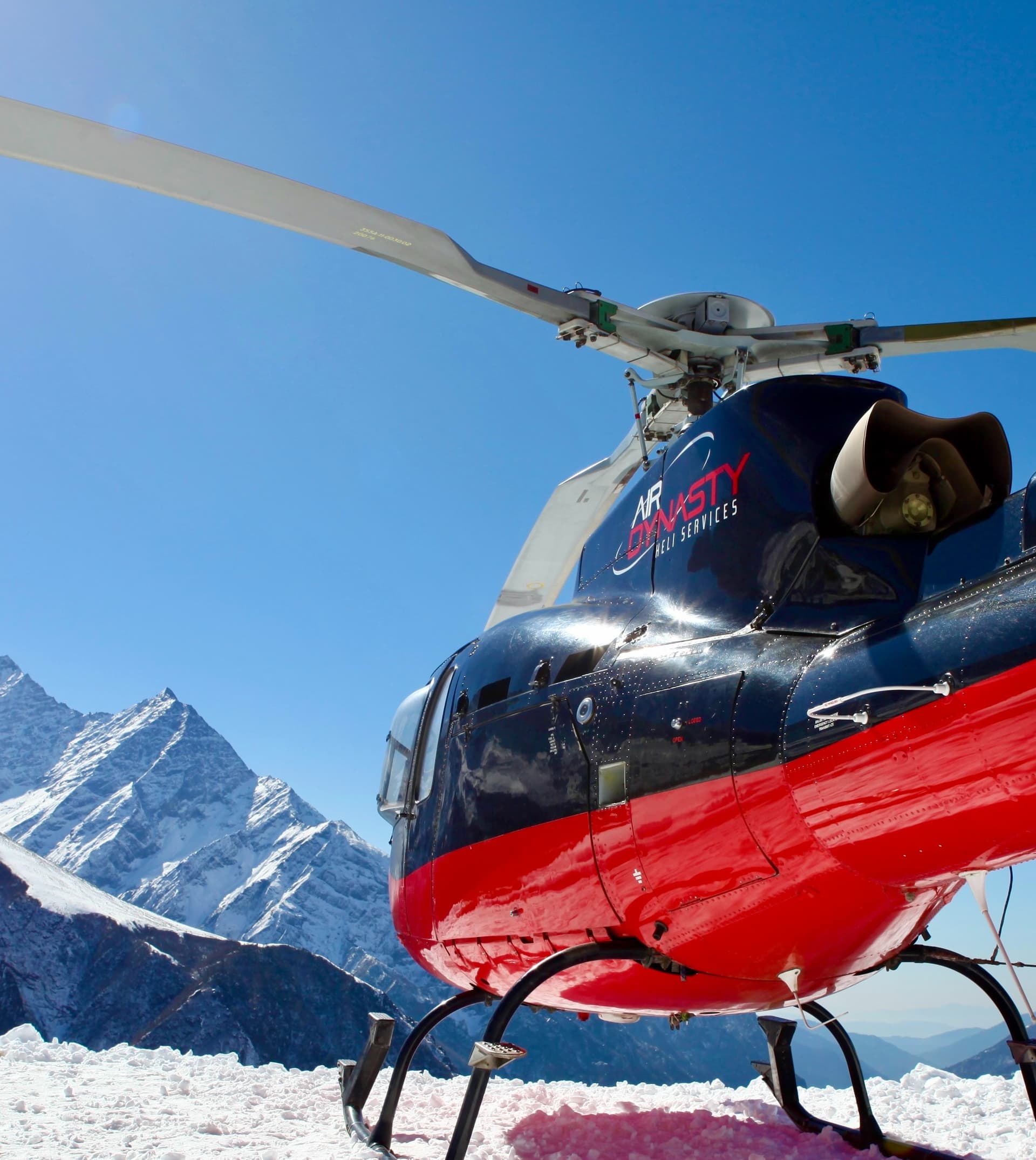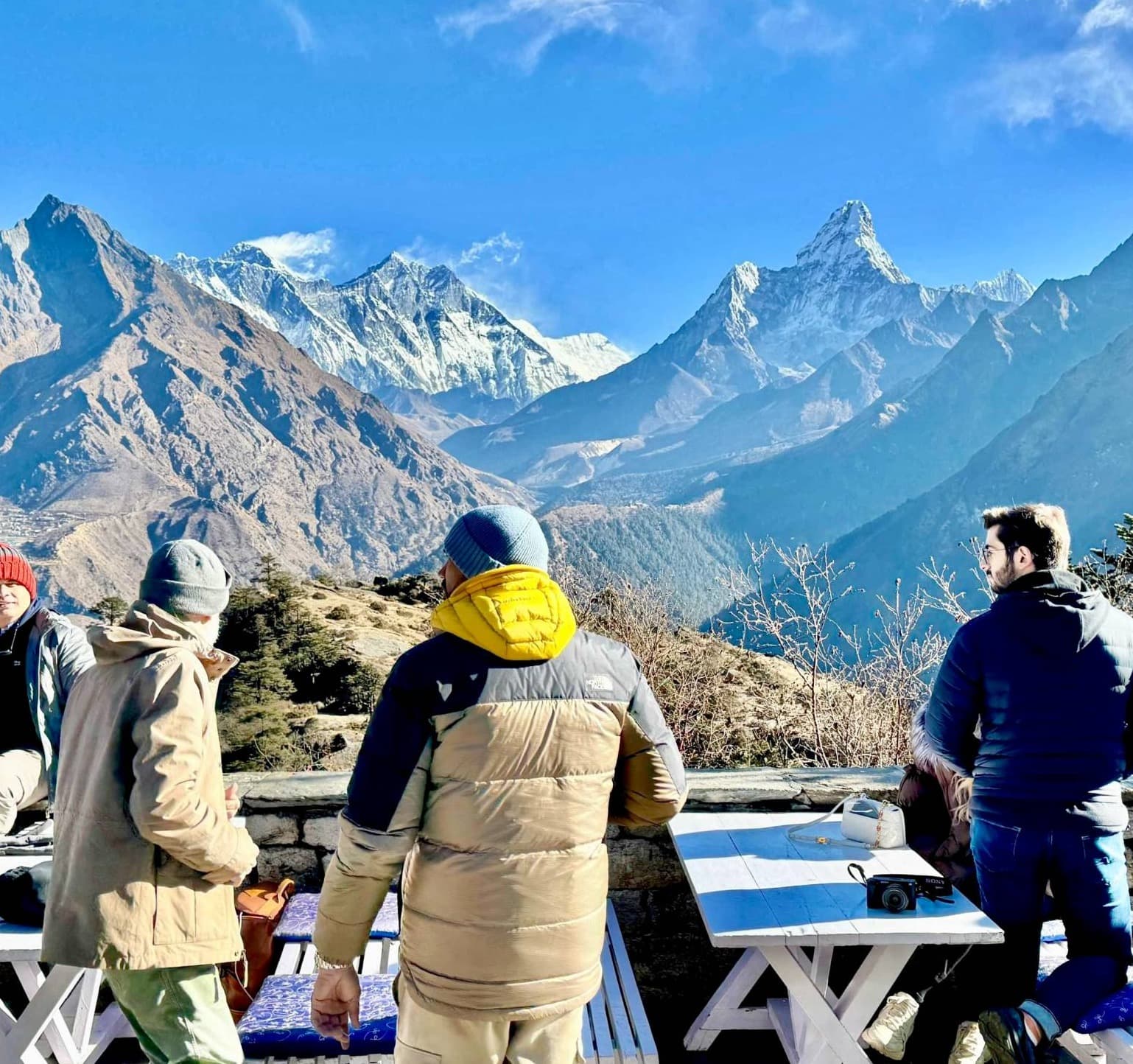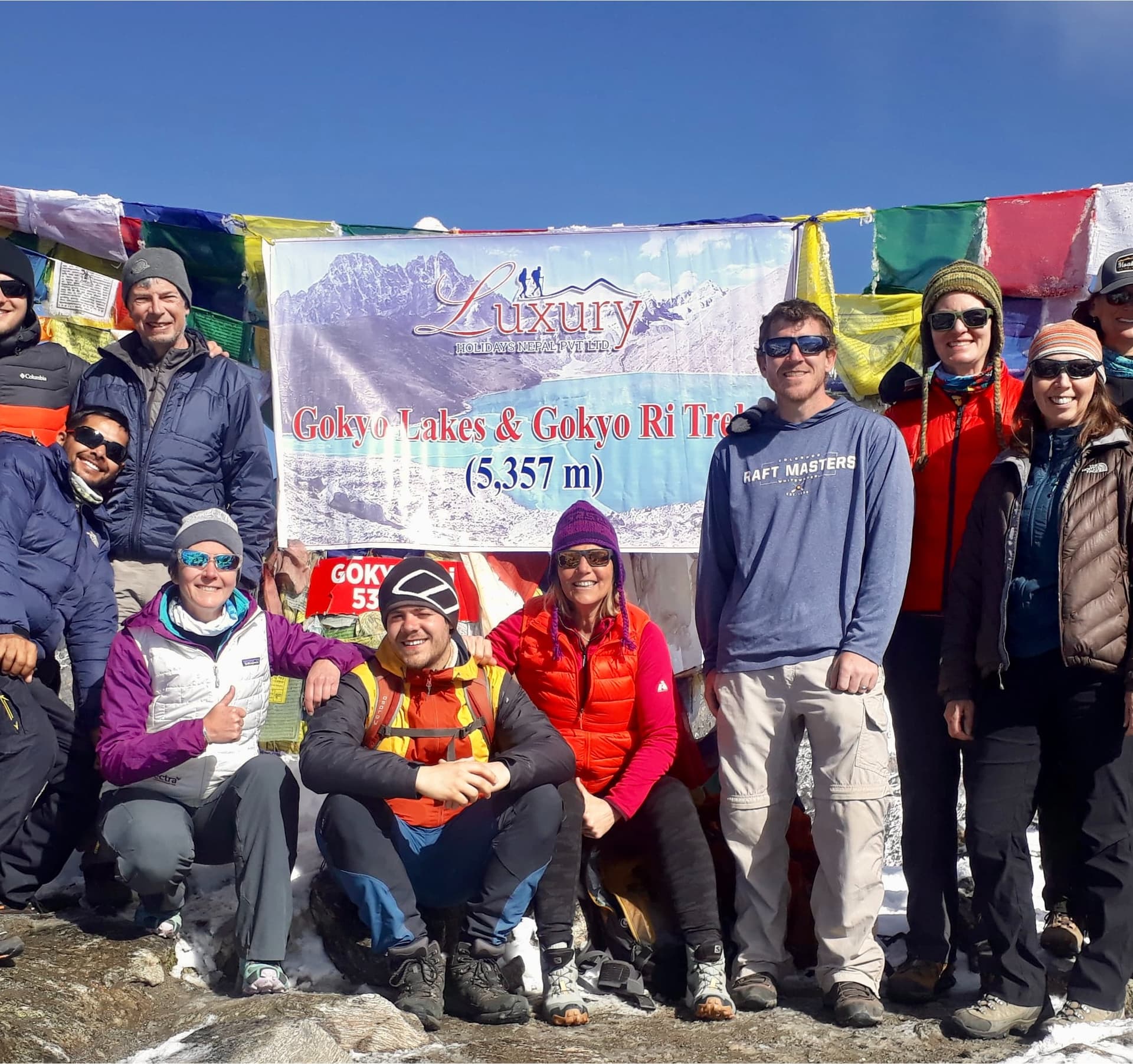Gorak Shep, situated at an altitude of 5,164 meters (16,942 feet), is the last settlement on the way to Everest Base Camp and Kala Patthar, making it a crucial stop for trekkers in the Everest region. This small yet iconic village lies on a frozen, sandy expanse surrounded by towering Himalayan peaks, including Pumori, Nuptse, and the mighty Everest. Despite its remote location, Gorak Shep offers basic accommodation and dining facilities in cozy teahouses, providing a much-needed rest point before tackling the final leg of the journey to the base of the world's highest mountain. The stark, barren beauty of its surroundings creates a surreal atmosphere that captivates every visitor.
Trekkers often spend a night in Gorak Shep to explore its two major highlights—Everest Base Camp and Kala Patthar, the latter being a renowned viewpoint for panoramic sunrise or sunset views of Mount Everest. The trek to these destinations from Gorak Shep offers a sense of adventure and unparalleled proximity to the Khumbu Icefall and Everest itself. While the altitude and rugged conditions present challenges, the rewarding vistas and sense of accomplishment make Gorak Shep an unforgettable part of the Everest trekking experience. This tiny village embodies the resilience and beauty of life in the high Himalayas, leaving a lasting impression on those who visit.
Major Highlights
- Proximity to Everest Base Camp: Gorak Shep is the final stop before Everest Base Camp. It is where trekkers rest and acclimatize before continuing the trek to the base camp. It is located just 2–3 hours away from Everest Base Camp, making it the nearest village to the famous landmark.
- Kala Patthar Viewpoint: From Gorak Shep, trekkers can take a short, challenging hike to Kala Patthar, a rocky outcrop that offers some of the most iconic views of Mount Everest and the surrounding peaks. The view from the top is unparalleled and is considered one of the best places to take photographs of Everest.
- Stunning Mountain Views: Gorak Shep provides spectacular views of the surrounding peaks, including Mount Everest, Pumori, Lhotse, and Nuptse. These views are a significant highlight of the trek and provide trekkers with an unforgettable experience.
- Acclimatization Stop: Gorak Shep is a crucial acclimatization point before heading to Everest Base Camp. It is important to rest and adjust to the altitude before taking the final push to base camp, which is at a higher altitude.
- Historical Significance: Gorak Shep is historically significant as it was the location of the first successful ascent of Mount Everest in 1953 by Sir Edmund Hillary and Tenzing Norgay. Their historic expedition left a legacy that makes the region even more iconic for trekkers.
- Base Camp Trekking: After reaching Gorak Shep, trekkers make their way to Everest Base Camp to view the base of the world's highest peak. The camp itself is a temporary settlement for climbers preparing for summit attempts and offers a chance to experience the world of mountaineering firsthand.
Accommodation & Food
Gorak Shep offers basic accommodation in the form of teahouses and guesthouses, which are the last places for trekkers to stay before heading to Everest Base Camp. The accommodations are simple, with shared rooms, basic bedding, and blankets. Many of the teahouses also offer hot drinks and snacks, though facilities are limited due to the high-altitude location.
The food in Gorak Shep is generally simple but provides the necessary sustenance for trekkers. Typical meals include dal bhat (lentil soup with rice), momos (dumplings), noodle soup, and chowmein. There are also Tibetan dishes like thukpa (noodle soup) and Tibetan bread. Trekkers can find basic snacks like granola bars, biscuits, and chocolates to keep their energy up during the trek.
Route to Gorak Shep
The trek to Gorak Shep is typically done from Lobuche, which is located approximately 3-4 hours away. The trek from Lobuche to Gorak Shep covers 4 kilometers and involves a gradual ascent. The route passes through the Khumbu Glacier, offering trekkers the opportunity to witness stunning glacier landscapes. Upon reaching Gorak Shep, trekkers usually take time to rest and acclimatize before heading to Everest Base Camp or Kala Patthar.
Best Time to Visit
The best times to visit Gorak Shep are during spring (March to May) and autumn (September to November). These seasons offer clear skies, mild temperatures, and stable weather, which make trekking conditions optimal.
- Spring (March to May): Moderate temperatures and clear skies, with rhododendrons in bloom along the trek.
- Autumn (September to November): Stable weather and excellent views of the mountains make autumn the ideal season for trekking in the Everest region.
- Winter (December to February): While winter trekking offers fewer crowds, it can be extremely cold, especially at high altitudes, and there may be snow, making the trails difficult.
- Monsoon (June to August): The monsoon season brings heavy rainfall, which can make trekking dangerous due to slippery trails and the risk of landslides.
Permits Required
To trek in the Sagarmatha National Park (which includes Gorak Shep), trekkers must obtain the following permits:
- Sagarmatha National Park Permit: This permit is required for all trekkers entering the park, costing around NPR 3,000 (about USD 26).
- TIMS (Trekkers’ Information Management System) Card: This card is required for all trekkers to ensure safety and track trekking activities.
Both permits can be arranged in Kathmandu or Lukla before starting the trek.
Tips for Visiting Gorak Shep
- Acclimatization: Gorak Shep is situated at a high altitude, so it’s essential to allow time to acclimatize before heading to Everest Base Camp or Kala Patthar. Rest and adjust to the altitude to avoid altitude sickness.
- Warm Clothing: Temperatures can be extremely cold in Gorak Shep, especially during the evenings and mornings. Make sure to bring warm layers, windproof jackets, and a good-quality sleeping bag suitable for cold weather.
- Hydration: Staying hydrated is important at high altitudes. Make sure to drink plenty of water, even if you don’t feel thirsty.
- Snacks and Energy: Bring high-energy snacks like granola bars, nuts, and chocolates to keep your energy up during the trek to Everest Base Camp.
- Respect Local Culture: Gorak Shep is part of the Sherpa region. Be respectful when interacting with the local community and visiting monasteries or religious sites.
Why Visit Gorak Shep with Luxury Holidays Nepal?
- Expert Guides: Luxury Holidays Nepal provides professional guides who are knowledgeable about the Everest region, its culture, and its terrain, enhancing your trekking experience.
- Seamless Logistics: From accommodations to permits, transportation, and meals, Luxury Holidays Nepal ensures that all logistics are taken care of for a smooth and stress-free journey.
- Comfortable Accommodation: Stay in carefully selected teahouses and lodges in Gorak Shep, providing a place to rest before continuing your trek to Everest Base Camp.
- Tailored Itineraries: Whether you are trekking to Everest Base Camp, Kala Patthar, or exploring other destinations in the Khumbu region, Luxury Holidays Nepal can customize your itinerary to suit your pace and goals.
- Cultural Immersion: Engage with the Sherpa community and learn about their unique traditions and way of life during your trek.
Gorak Shep is an essential stop on the Everest Base Camp Trek, offering trekkers the opportunity to rest, acclimatize, and enjoy breathtaking views of the world’s highest peaks, including Mount Everest, Lhotse, and Pumori. As the last village before Everest Base Camp, it provides a vital resting point before the final push to base camp and the iconic Kala Patthar viewpoint. The serene atmosphere, stunning mountain views, and simple accommodations make Gorak Shep an unforgettable part of the journey. With the support of Luxury Holidays Nepal, your trek to Gorak Shep and beyond will be seamless, comfortable, and culturally enriching, allowing you to focus on the adventure ahead and experience the beauty and majesty of the Everest region without any worries. Whether you’re heading to Everest Base Camp, Kala Patthar, or simply soaking in the views, Gorak Shep offers an essential piece of the Everest trekking experience.
FAQs
Q: How long does it take to trek from Lobuche to Gorak Shep?
A: The trek from Lobuche to Gorak Shep takes around 3-4 hours, covering approximately 4 kilometers.
Q: What is the altitude of Gorak Shep?
A: Gorak Shep is located at an altitude of 5,164 meters (16,942 feet).
Q: Is Gorak Shep suitable for beginner trekkers?
A: Gorak Shep is located at a high altitude, making it more suitable for trekkers who have already acclimatized. It's important to take your time and rest to prevent altitude sickness.
Q: What should I pack for my trek to Gorak Shep?
A: Pack warm clothing, trekking boots, sun protection, a camera, snacks, and a first-aid kit. A good-quality sleeping bag is also essential.
Q: Is there mobile network coverage in Gorak Shep?
A: Mobile network coverage is available in Gorak Shep, but the signal may be weak in some areas. It's best to inform family or friends of your trekking plans in advance.
Q: How can I reach Everest Base Camp from Gorak Shep?
A: From Gorak Shep, it takes approximately 2-3 hours to trek to Everest Base Camp. The route is a gradual walk through rocky terrain and moraine.
Q: Can I trek to Kala Patthar from Gorak Shep?
A: Yes, you can trek to Kala Patthar from Gorak Shep. The hike takes approximately 2–3 hours and offers one of the best views of Mount Everest.







